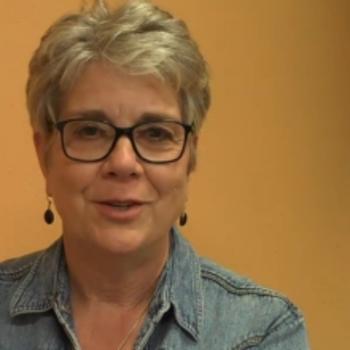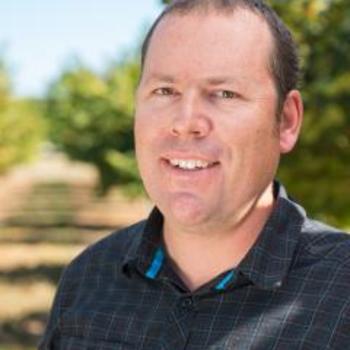SWD series #2
Key points in this fact sheet
- Spotted-wing drosophila (SWD) undergo complete metamorphosis (egg, larva, pupa, adult). Eggs can develop to pupae inside fruit. The developing larvae feed on the pulp of the fruit and commonly leave the fruit to find suitable pupation sites. SWD pupae are often found in the ground.
- Immature life stages within the fruit are protected from adverse environmental conditions and pesticides.
- SWD adults are more susceptible to pesticide applications than earlier life stages because they live outside of fruit pulp.
- SWD egg laying is more elevated in shady, humid portions of the crop canopy.
- Temperatures on weed fabric are less optimal for the survival of pupating SWD larvae.
- Overhead sprinklers create a more suitable climate for SWD than drip irrigation.
- Canopy pruning concurrently reduces microclimate suitability and egg-laying.
- Surrounding vegetation may offer optimal habitat and microclimates and increase pest pressure.
- Proper management of surrounding vegetation may reduce SWD survival.
Spotted-wing drosophila life cycle
Cultural controls can reduce spotted-wing drosophila population pressure by modifying the microclimate within the crop so the environment does not promote SWD reproduction and survival.
The rate of SWD development and reproduction depends on temperature and humidity. Flies can develop from the egg stage to reproductive adults within one to two weeks when temperatures are within optimum range: 71–82°F (22–28°C) and humidity is 80%–90%.
SWD undergo a complete metamorphosis. Eggs develop into three larval stages, pupae and finally adults. During the growing season, the egg, larval and pupal stages last from one to three, five to seven, and four to 15 days, respectively. In the mid-Willamette Valley, SWD have five to ten generations during the growing season (Figure 1, page 2).
Adult life span during the growing season is about three to five weeks. Flies emerging late in the season are adapted to overwintering and may live longer. A single female can lay up to 40 eggs per day and 200–400 eggs total in her lifetime. A female fly lays approximately one to three eggs per oviposition site. Multiple females may lay eggs in the same fruit, giving rise to greater infestation of individual fruits and multiple clutches of larvae.
Immature life stages are sheltered inside the fruit. Eggs are laid directly beneath the skin of the fruit. As the eggs hatch, the larvae consume the fruit pulp. Ultimately, they molt into pupae. Life stages within fruit are protected from adverse conditions, such as dehydration, temperature fluctuations, and full-cover insecticide applications. SWD pupae and adults are more susceptible to adverse environmental conditions than earlier life stages. SWD can pupate inside or outside the fruit. At high infestation levels, a greater proportion of pupae will be found outside the fruit. In such cases, larvae will drop out of fruit before they develop into pupae. Once out of the fruit, pupae tend to burrow into the soil to find a more suitable and protected environment.
Microclimates
All factors that affect temperature and humidity in an orchard will also affect the environment for SWD (Figure 2). Overhead irrigation increases humidity and can lead to higher rates of SWD reproduction and development compared to drip irrigation.
Weed fabric prevents pupating SWD larvae from burrowing into the soil. SWD find more suitable temperature and humidity conditions an inch under the soil surface, as opposed to warmer and drier conditions found on the soil surface or weed fabric.
Pupae are very susceptible to desiccation and do not survive when exposed to low humidity.
Surrounding vegetation provides more optimal habitat and microclimates for SWD during the hottest hours of the day. Proper management of surrounding vegetation may alleviate SWD pressure by reducing “hot spots” outside the crop where SWD can overwinter or escape field sprays.
Detailed work showed that SWD lay eggs at elevated levels in the center of the plant canopy. Fewer eggs are laid in the upper and outer portions of the canopy. Eggs laid in fruit in the upper and outer portions of the canopy are more prone to high temperatures during the summer period (Figure 3).
Heavier pruning of dense canopies where SWD hotspots occur can reduce suitable microclimates and result in lower SWD pressure on the crop. Areas where pressure is reduced may require less pruning.
Further reading
Coop, L. 2011. IPM Pest and Plant Disease Models and Forecasting. USPEST.ORG. 22 September 2011.
Diepenbrock, L. M. and H. J. Burrack. 2016. Variation of within-crop microhabitat use by Drosophila suzukii (Diptera: Drosophilidae) in blackberry. Journal of Applied Entomology 141: 1–7.
IPPC. Online Phenology and Degree Day models. Oregon State University. 4 Jan. 2010.
Kanzawa T. 1939. Studies on Drosophila suzukii Mats. Kofu, Yamanashi Agricultural Experiment Station 49 (abstr.). The Review of Applied Entomology 29:622
Klick, J., W.Q. Yang, J.C. Lee, D.J. Bruck. 2016. Reduced spray programs for Drosophila suzukii management in berry crops. International Journal of Pest Management 62(4): 368–377.
Mitsui, H., H.K. Takahashi, M.T. Kimura. 2006. Spatial distributions and clutch sizes of Drosophila species oviposition on cherry fruits of different stages. Population Ecology 48: 233–237.
Rendon D, K. Hamby, A. Arsenault-Benoit, C.M. Taylor, R.K. Evans, C.R. Roubos, A.A. Sial, M. Rogers, A. Petran, S. Van Timmeren, P. Fanning, R. Isaacs, V.W. Walton . 2019. Mulching as a cultural control strategy for Drosophila suzukii in blueberry. Pest Management Science. DOI: 10.1002/ps.5512
Rendon, D. and V.M. Walton. 2019. Drip and Overhead Sprinkler Irrigation in Blueberry as Cultural Control for Drosophila suzukii (Diptera: Drosophilidae) in Northwestern United States. Journal of Economic Ecology 112, 745–752. https://doi.org/10.1093/jee/toy395
Tochen, S., D.T. Dalton, N.G. Wiman, C. Hamm, P.W. Shearer, V.M. Walton. 2014. Temperature-related development and population parameters for Drosophila suzukii (Diptera: Drosophilidae) on cherry and blueberry. Environmental Entomology 43:501–510
Tochen, S., J.M. Woltz, D.T. Dalton, J.C. Lee, N.G. Wiman, V.M. Walton. 2016. Humidity affects populations of Drosophila suzukii (Diptera: Drosophilidae) in blueberry. Journal of Applied Entomology, 140(1–2): 47–57.
Walsh, D.B., M.P. Bolda, R.E. Goodhue, A.J. Dreves, J. Lee, D.J. Bruck, V.M. Walton, S.D. O’Neil, F.G. Zalom. 2011. Drosophila suzukii (Diptera; Drosophilidae): invasive pest of ripening soft fruit expanding its geographic range and damage potential. Journal of Integrated Pest Management 2: G1–G8.
About this series
This publication is one of a series of nine publications focused on strategies for controlling spotted-wing drosophila in Oregon. Find them at https://catalog.extension.oregonstate.edu/. The publications in this series include:
- EM 9261: How Seasons Affect Population Structure, Behavior and Risk on Spotted-wing Drosophila
- EM 9262: Cultural Control Strategies to Manage Spotted-wing Drosophila
- EM 9263: Host Range and Characteristics Affecting Fruit Susceptibility to Spotted-wing Drosophila
- EM 9264 Noncrop Host Plants Used By Spotted-wing Drosophila
- EM 9265: Chemical Control of Spotted-wing Drosophila: Spray Applications
- EM 9266: Chemical Control of Spotted-wing Drosophila: Insecticide Efficacy
- EM 9267: Monitoring Techniques for Spotted-wing Drosophila
- EM 9268: Potential Impacts of Irrigation on Biocontrol on Spotted-wing Drosophila Populations
- EM 9269: Biocontrol of Spotted-wing Drosophila
© 2019 Oregon State University.







